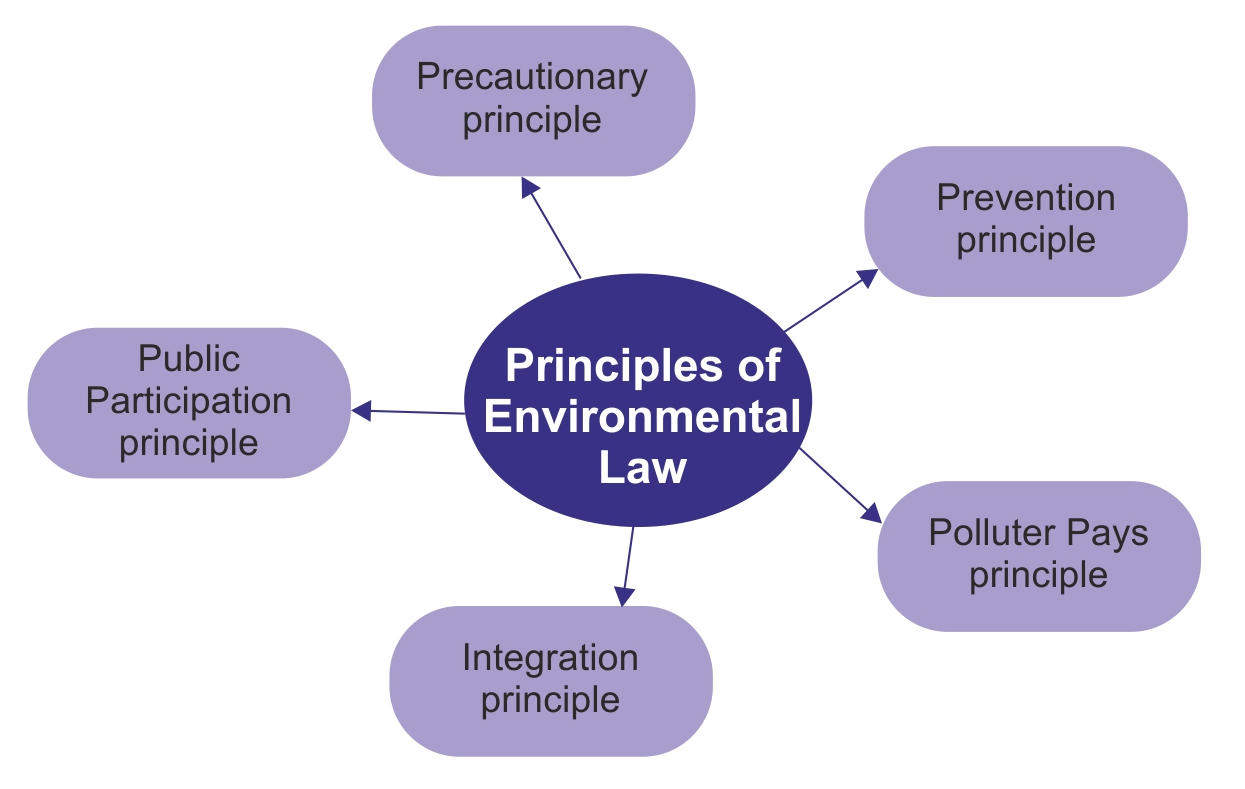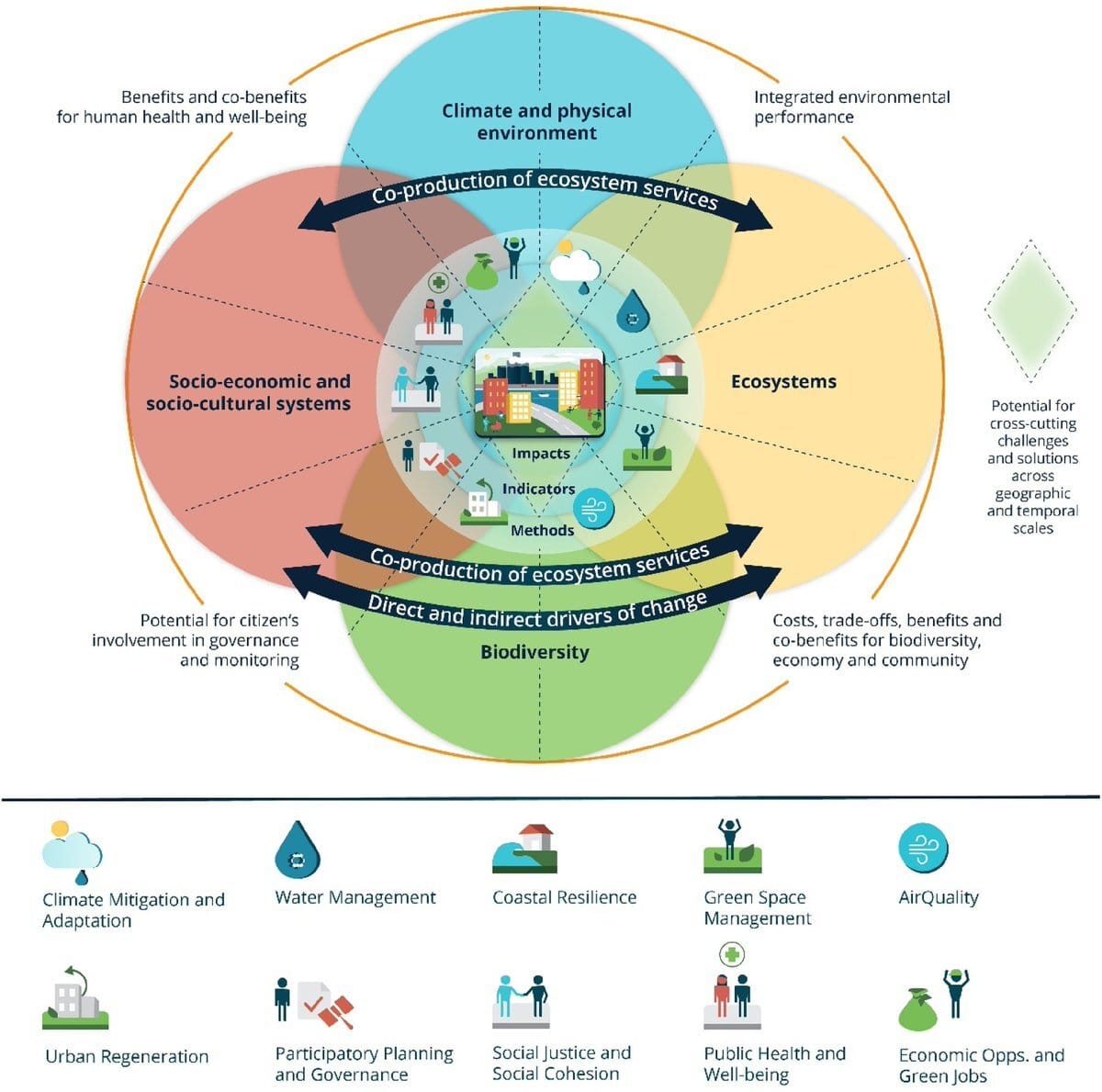Environmental Sustainability in Post-Lockdown Phase
This article is based on “Rediscovering sustainable development through a Covid-19 lockdown lens” which was published in the Indian Express on 08/05/2020. It talks about some innovative solutions to maintain environmental sustainability in the Post-lockdown scenario.
The economic shutdown under the Covid-19 pandemic has caused a negative impact on health and livelihood of the people, but it had a positive impact on the environment.
Due to major industrial activities brought to halt, it has improved the air and water quality dramatically and slashed the material consumption, water usage and waste production.
In this context, the lockdown has given a rare opportunity to review the pre-Covid-19 growth paradigm where the growth was based on blind exploitation of natural resources and move towards the principles of sustainable development in every human action including public policy making.
Effect of Economic Shutdown on Environment
- Data from the CPCB (Central Pollution Control Board) shows that pollution level in Ganga's water has significantly reduced.
- Its Biochemical Oxygen Demand (BOD) has correspondingly fallen, along with the concentration of total coliform, which is a testament to improved water quality.
- Similar positive developments have been reported for the Yamuna.
- There are several reports that reflect the improved air quality.
- The Delhi/NCR pollution level has significantly reduced.
- Dhauladhar range in Himachal Pradesh again being visible from Jalandhar, which is 200 km away. Citizens have also seen Mt. Kanchenjunga from Siliguri and Mt. Everest from parts of Bihar during the lockdown.
- This improved quality of air, which has happened after 30 years highlights just how long severe air pollution has been persisting.
- The falling groundwater levels improved with the reduced industrial and commercial activity.
- Most remarkably, the nation-wide lockdown has considerably reduced municipal solid waste (MSW) generation.
- This drop signifies to the shift in consumer demand and behavioral changes towards sustainable consumption.
Ways to Maintain this Sustainability in Post-lockdown World
Nature-Based Solution (NBS):
- Nature-based solutions (NBS) refers to the sustainable management and use of nature for tackling socio-environmental challenges.
- The challenges include issues such as climate change, water security, water pollution, food security, human health, and disaster risk management.
- NBS creates harmony between people and nature, enables ecological development and represents a holistic, people-centred response to climate change.
- Example of NBS may include:
- Restoration or protection of mangroves along coastlines utilizes a nature-based solution to accomplish several things.
- Mangroves moderate the impact of waves and wind on coastal settlements or cities and sequester CO2.
- They also provide safe nurseries for marine life that can be the basis for sustaining populations of fish that local populations depend on.
- Additionally, the mangrove forests can help control coastal erosion resulting from sea level rise.
- Similarly, in cities green roofs or walls are nature-based solutions that can be used to moderate the impact of high temperatures, capture stormwater, abate pollution, and act as carbon sinks, while enhancing biodiversity.
- Upsloping vegetation to reduce the risks of landslides.
- Creating permeable lesser concrete areas to help replenish groundwater in regions facing water scarcity.
- Large hotels and resorts can effectively pioneer solutions such as artificial wetlands for water recycling, which would also add to the local landscape’s aesthetics.
- Restoration or protection of mangroves along coastlines utilizes a nature-based solution to accomplish several things.
- Thus, NBS underpin the Sustainable Development Goals, as they support vital ecosystem services, biodiversity, and access to fresh water, improved livelihoods, healthy diets and food security (organic agriculture) from sustainable food systems.
- Also, NBS are an essential component of the overall global effort to achieve the goals of the Paris Agreement on Climate Change.
Note:
The International Union for Conservation of Nature (IUCN) defines nature-based solutions as “actions to protect and restore natural or modified ecosystems, that address societal challenges effectively and adaptively, simultaneously providing human well-being and biodiversity benefits.
Use of Bio-composites
- Bio-composites are an exciting new solution to the ever-increasing demand for industrial raw materials.
- These are structures that have naturally occurring minerals woven together into a matrix of natural fibres, such as cellulose and lignin.
- Due to their strength, lower weight and recyclability, bio-composite products are being used as environmentally superior alternatives to traditional raw materials such as wood and plastic.
- For instance, starch-based clay nanocomposites can be a possible alternative for food packaging, while certain bio-composites are used to supplement high-strength carbon fibre structures for industrial applications.
Effective Waste Management
- In order to turn Waste into wealth.
- A mandatory drive for household-level waste segregation across urban India would thus be an essential first step.
- Source-segregated solid waste that is bio-composted, vermin-composted or anaerobically digested, based on bio-recycling methods, would be a cost-effective means of generating organic manure and megawatts of bioenergy, respectively..
- For the water-heavy industries of pharmaceuticals, paper, food and beverage, adopting best practices in minimising water consumption would progress them towards Zero Liquid Discharge (ZLD).
- Bio-treatment of industrial effluents such as chemicals, detergents and toxic sludge are also well within our capacities, but their compliance needs to be mandated to keep the rivers clean.
Building Natural Infrastructure
- Natural infrastructure is defined as a strategically planned and managed network of natural lands, such as forests and wetlands, working landscapes, and other open spaces that conserves or enhances ecosystem values and functions and provides associated benefits to human populations.
- This can be built by establishing interconnected networks of green spaces that conserves natural systems and provides assorted benefits to human populations.
- An example of natural infrastructure can be seen in the concept of biosphere reserves, which incorporates core protected areas for nature conservation and buffer zones and transition areas where people live and work in a sustainable way.
Conclusion
There are lots of other ways to develop environmental sustainability. However, for long-term sustenance, there is need to bring the behavior change (like sustainable consumption, making environment and climate change a subject of public debate) in conservation strategy.
|
Drishti Mains Question What do you understand by Nature-based Solution? Discuss its role in ensuring environmental sustainability. |
This editorial is based on “Contempt for labour: On dilution of labour laws” which was published in The Hindu on May 8th, 2020. Now watch this on our Youtube channel.


